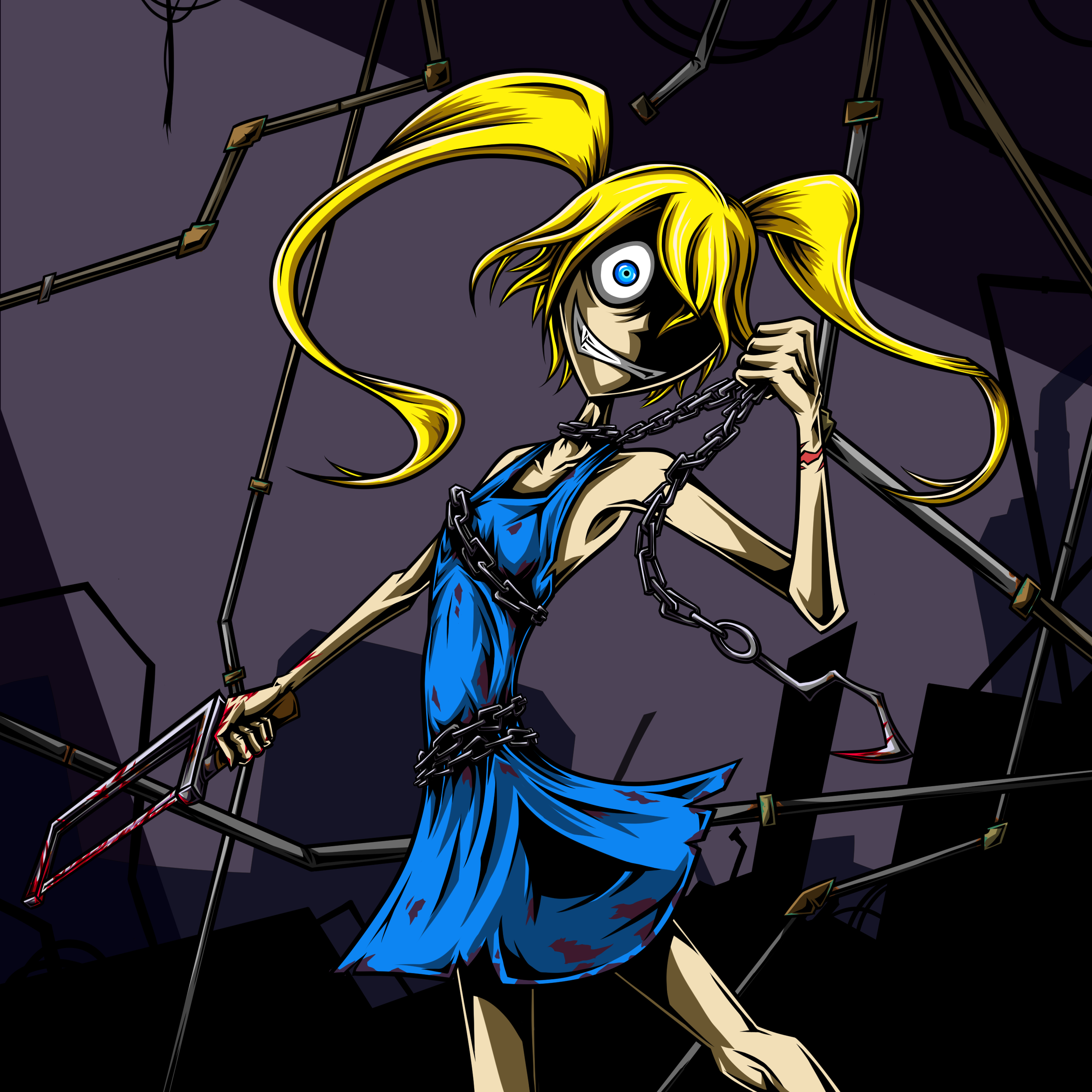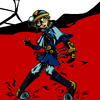
Factory of Madness: The Lecton Ripper by @rollee (Rollee Bitterblossom)
Most everyone in Piedmont Factory has been touched by the madness in some way or form. However a select few are so far gone they no longer even resemble who they were in life. Sarah refers to these kids as the “broken.” But even amongst the broken, the ghost of Elizabeth Schneider is stands out.
She stalks the old factory, giggling to herself incoherently. She chains up her victims and carelessly hacks them apart. Violence is nothing unique in Piedmont but what truly pushes Elizabeth over the edge is her mindset. Unlike Rheena, it is not out of a misplaced hatred for her victims. Nor is it to complete some forlorn goal like Eugene. Due to her incessant giggling one may think it is out of some sick sadistic glee but the truth is unfortunately far more hollow than even that.
In 1924, Elizabeth Schneider was forced to watch as a serial killer hacked apart her parents. She was the last surviving victim of then infamous Lecton Ripper. She would live the rest of her short life in Piedmont haunted by that memory, a memory so traumatic it would consume her entirely in death. The girl named Elizabeth Schneider is gone, her ghost is now merely a mindless simulation of her own worst nightmare.
“It’s your turn! it’s your turn!” - Elizabeth Schneider



Most definitely one of the kids to avoid. Yikes! At least the giggling is there to signal you. Right?